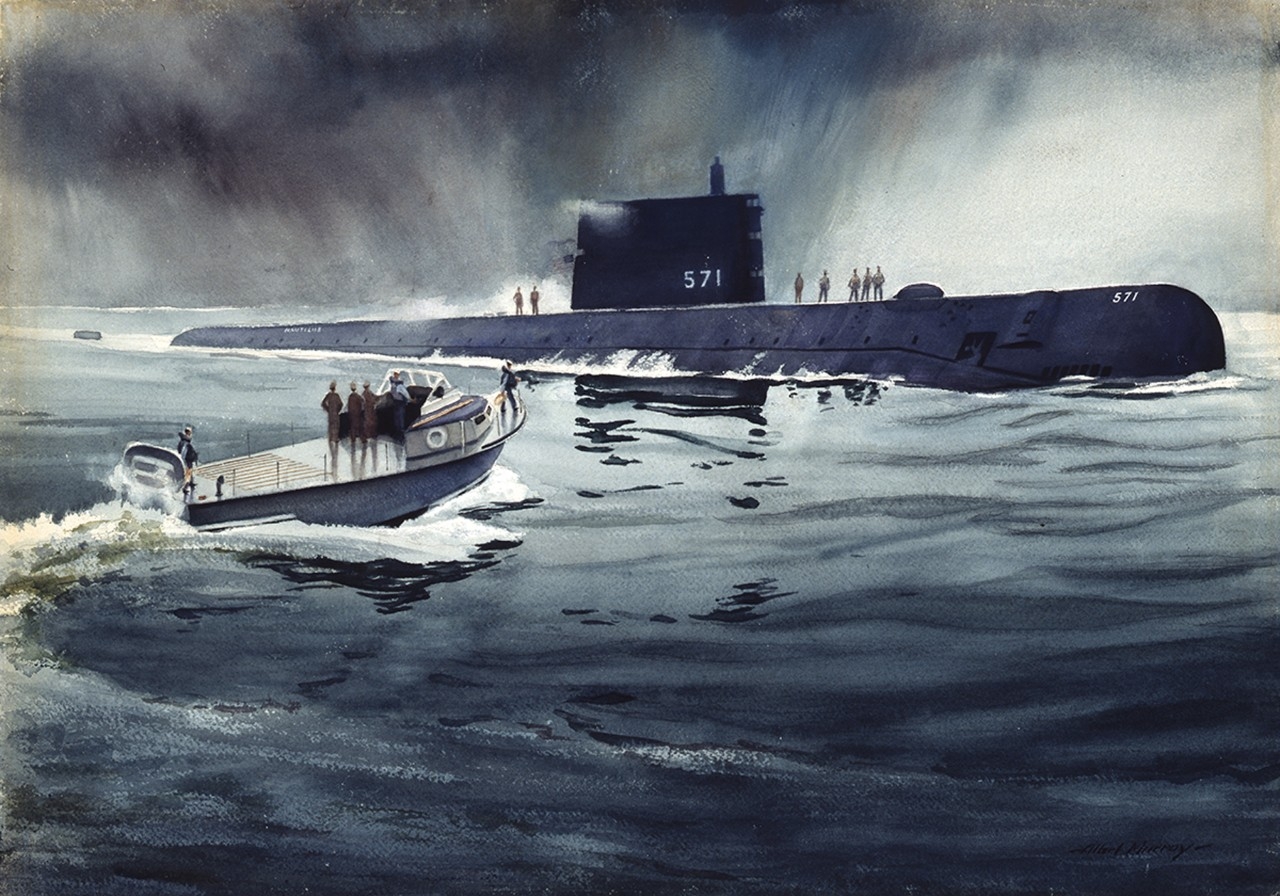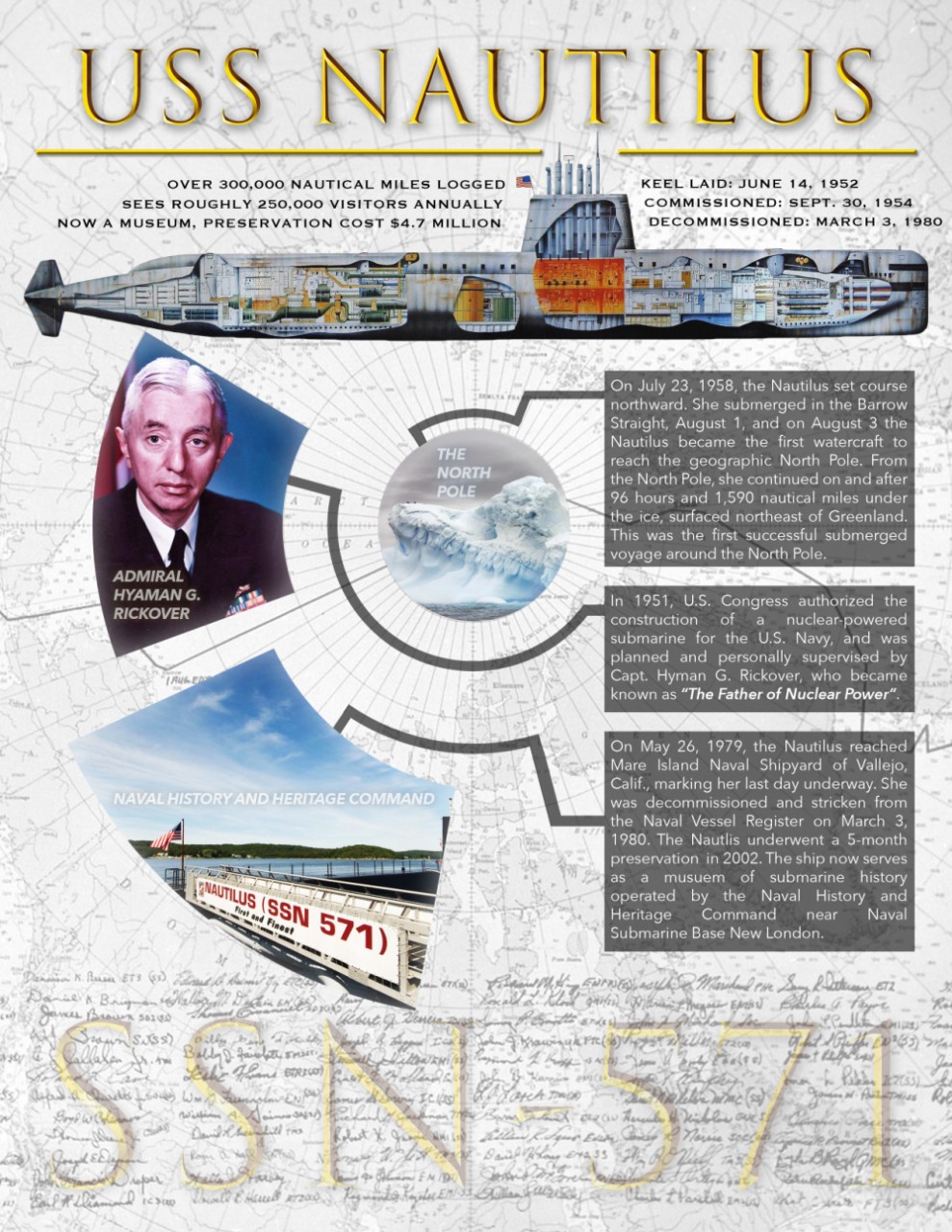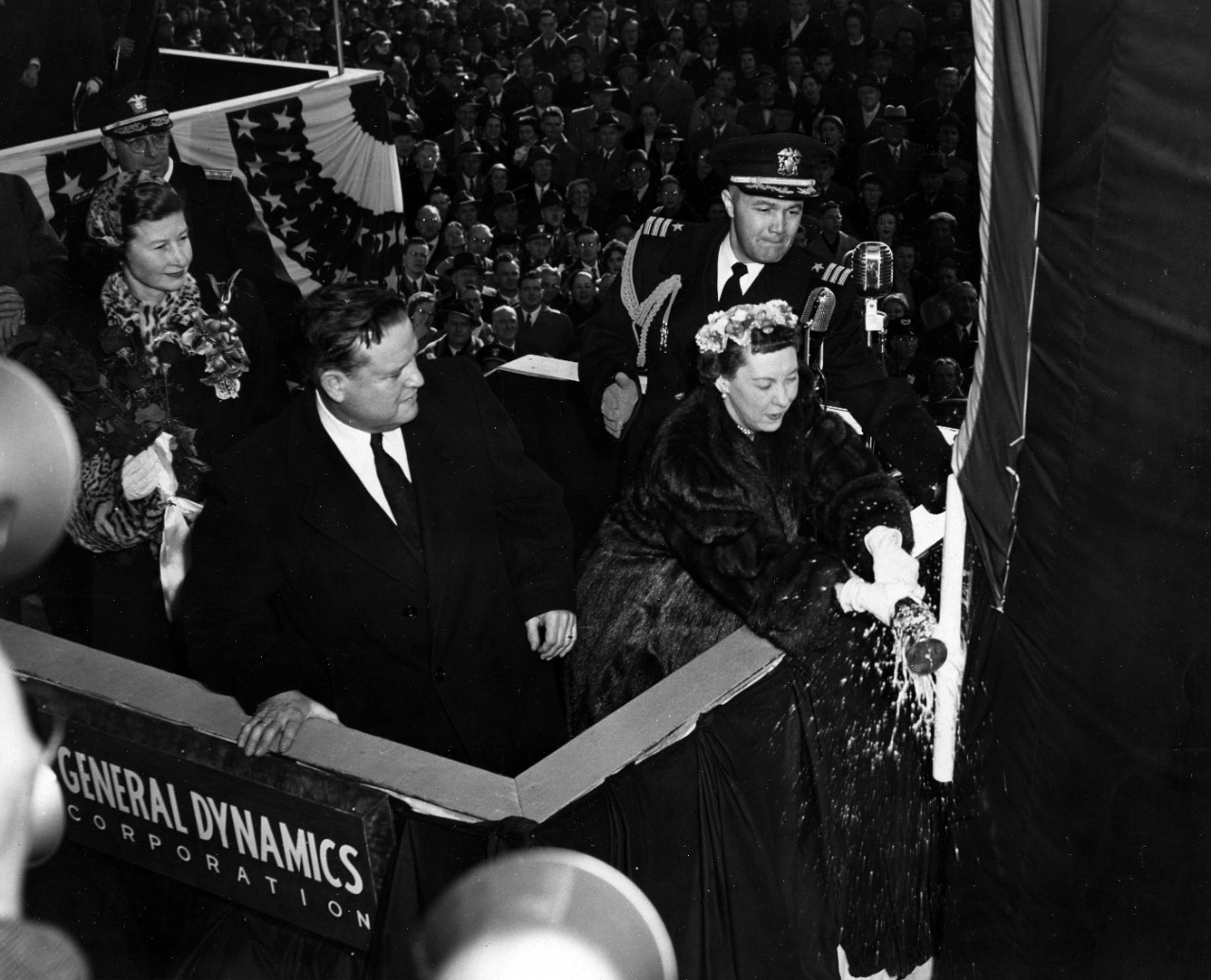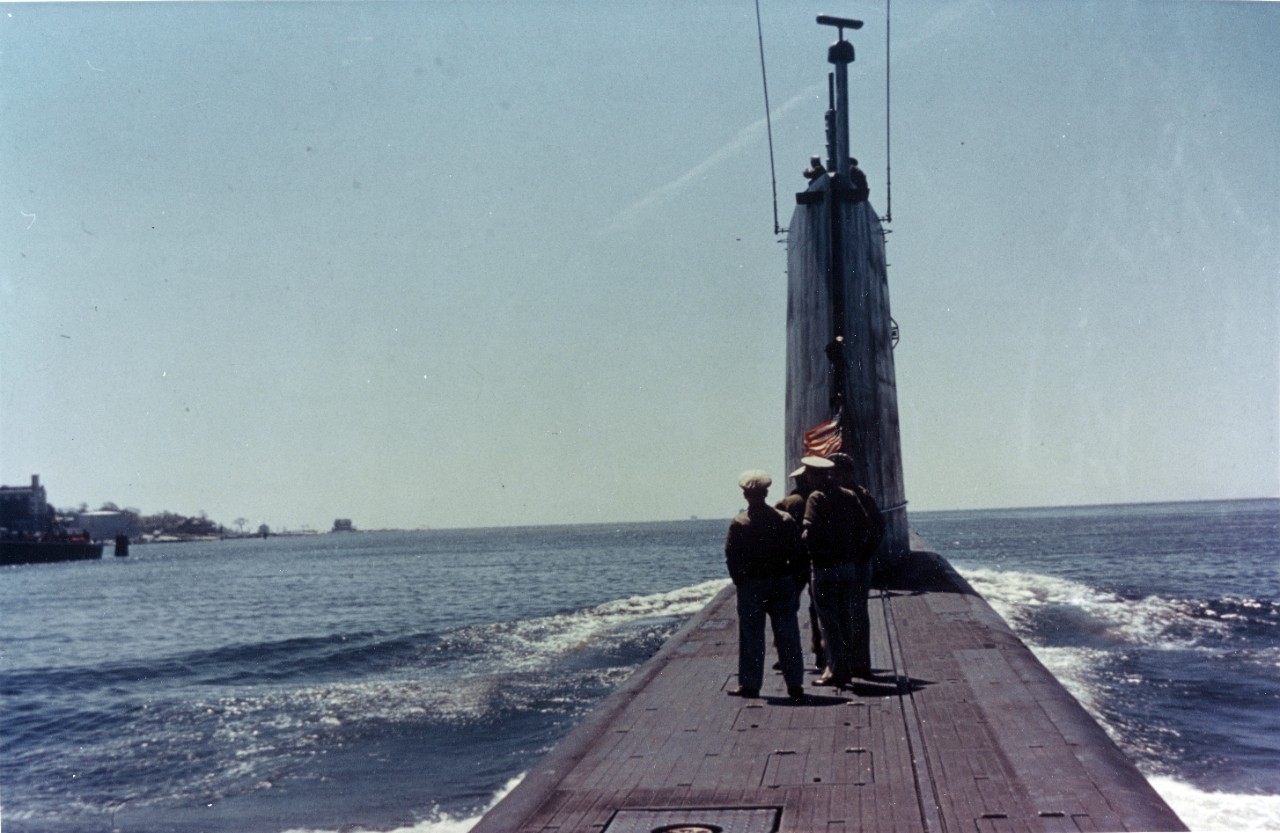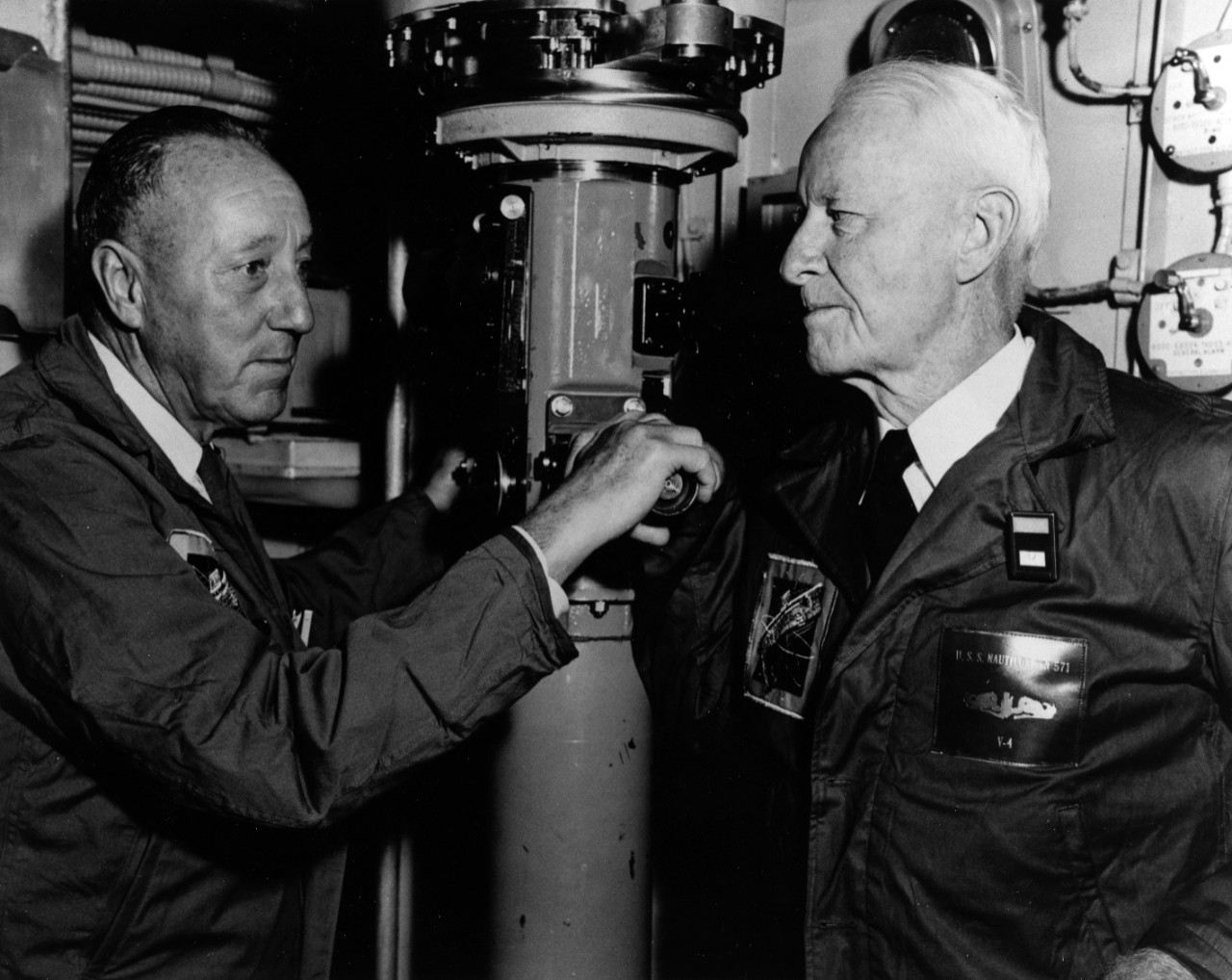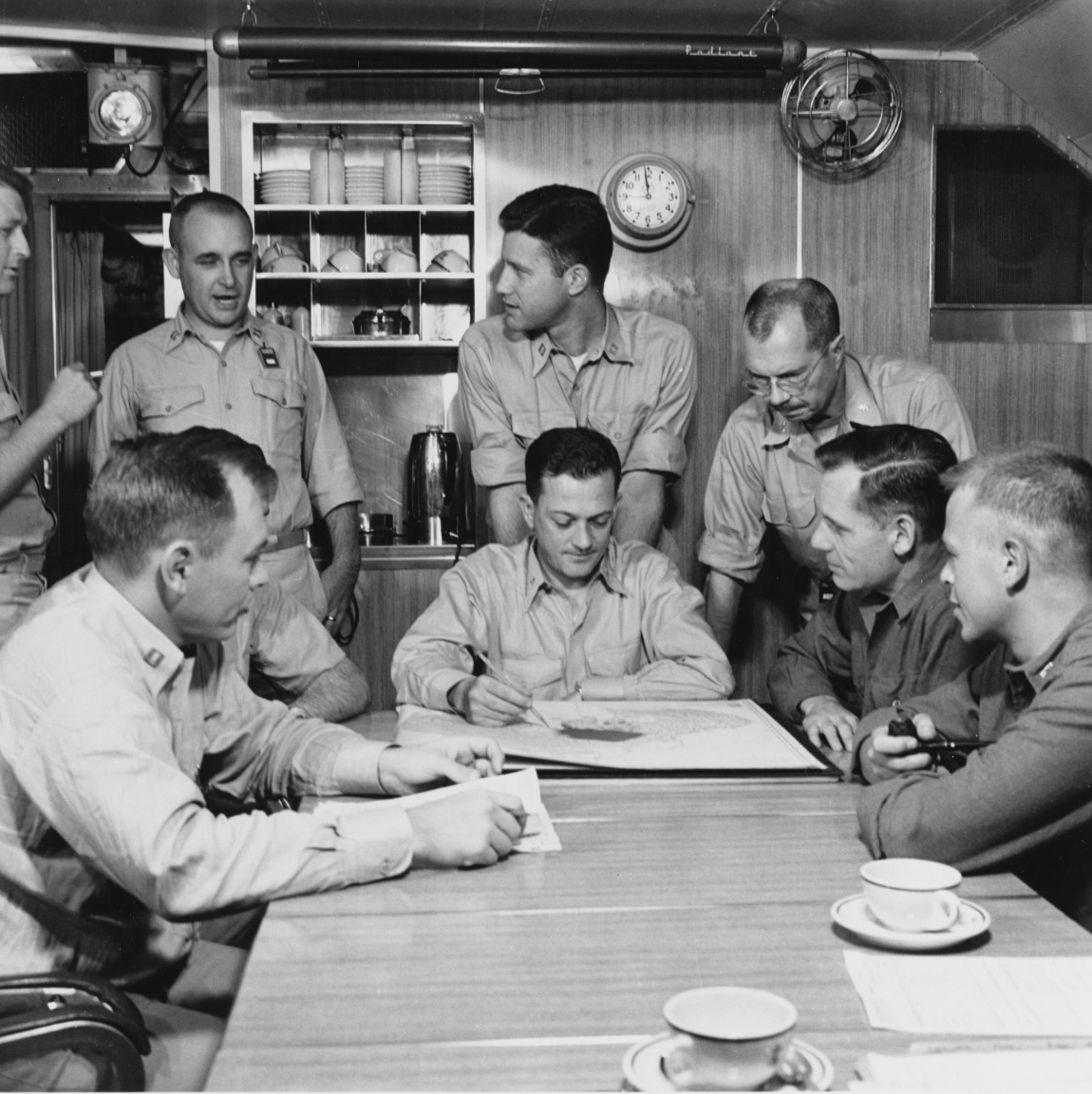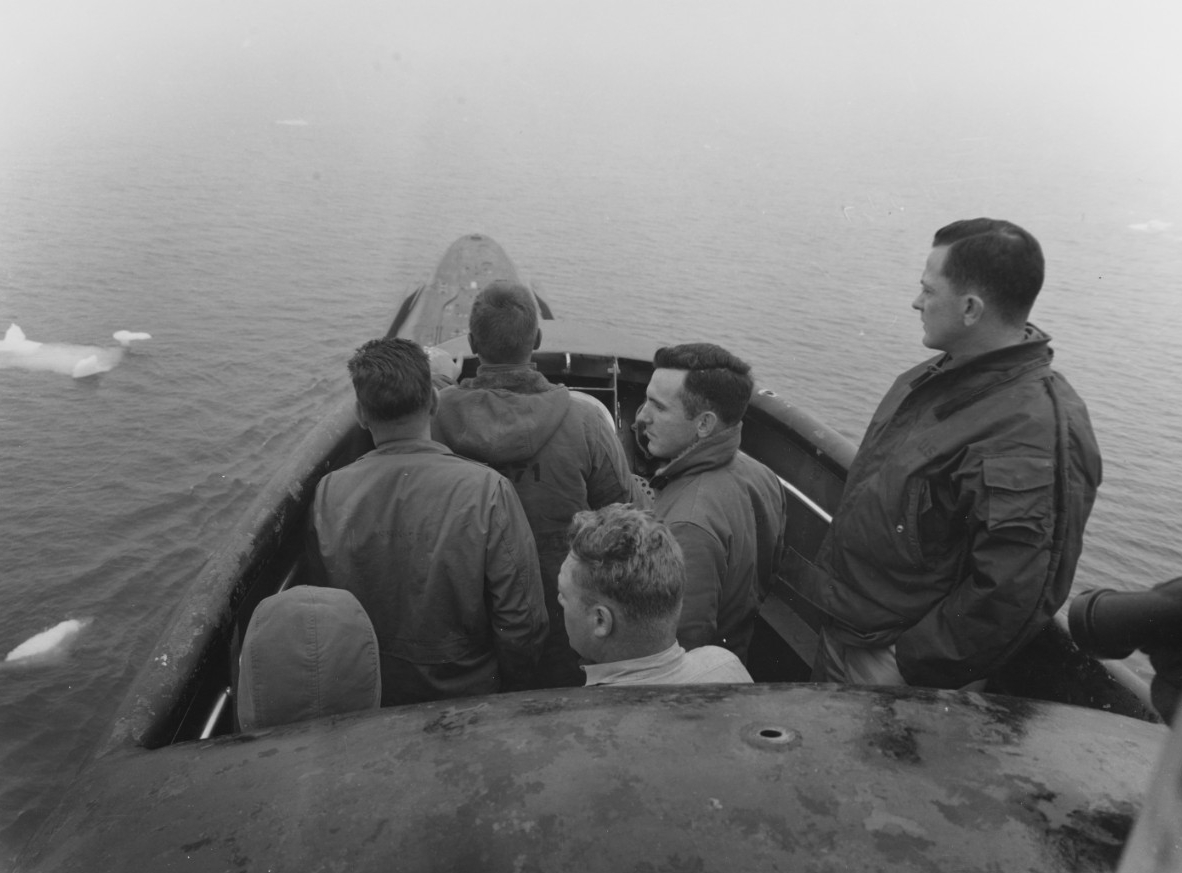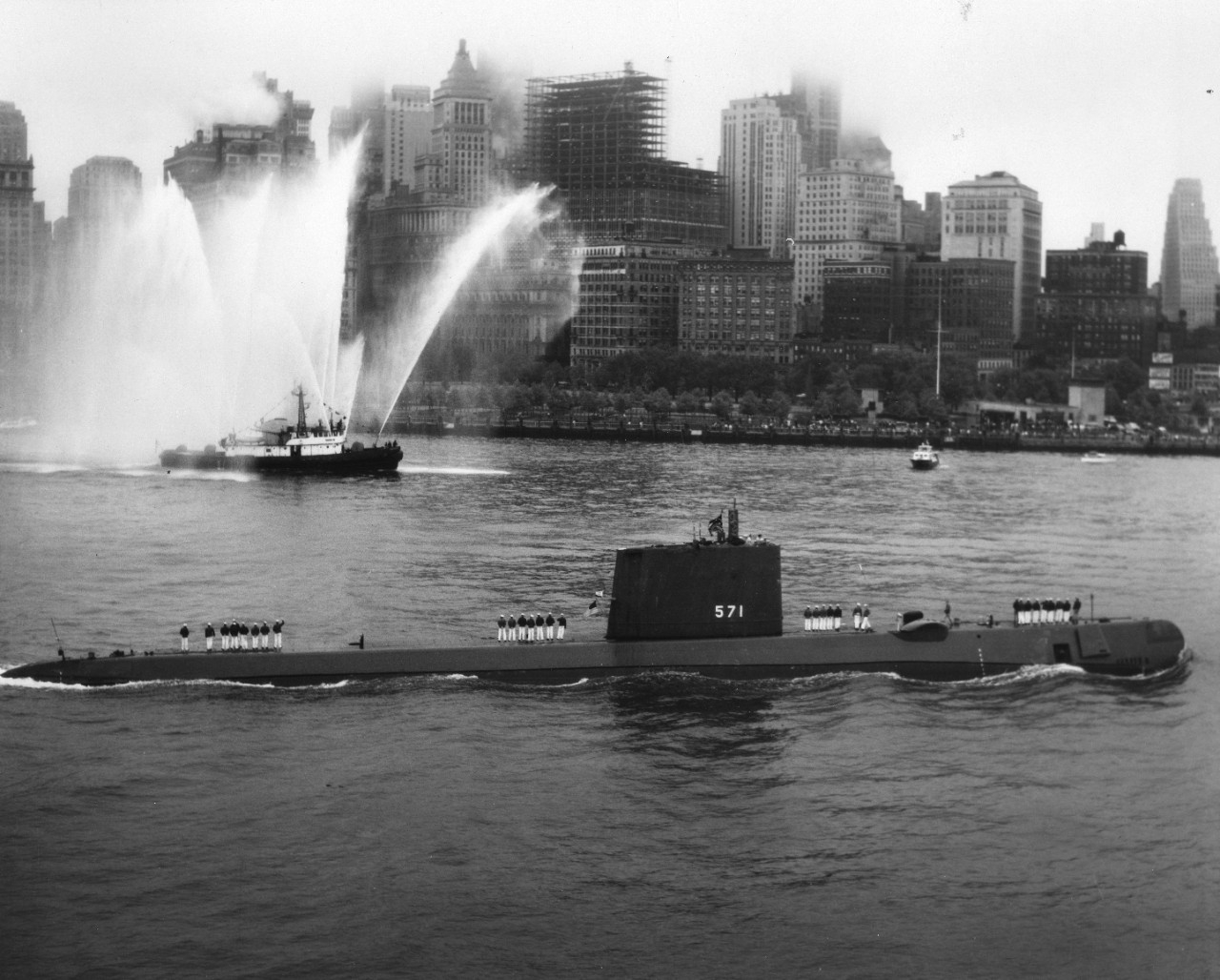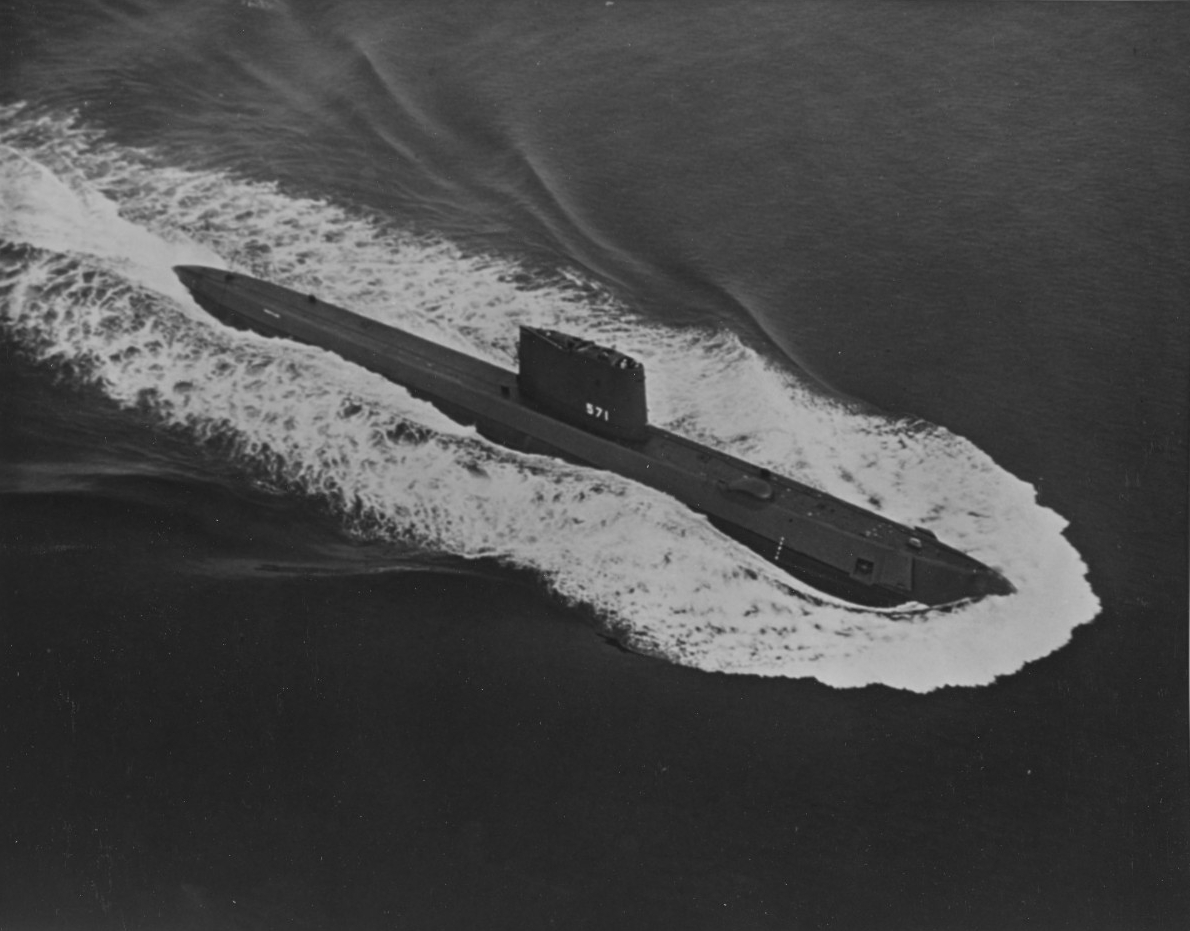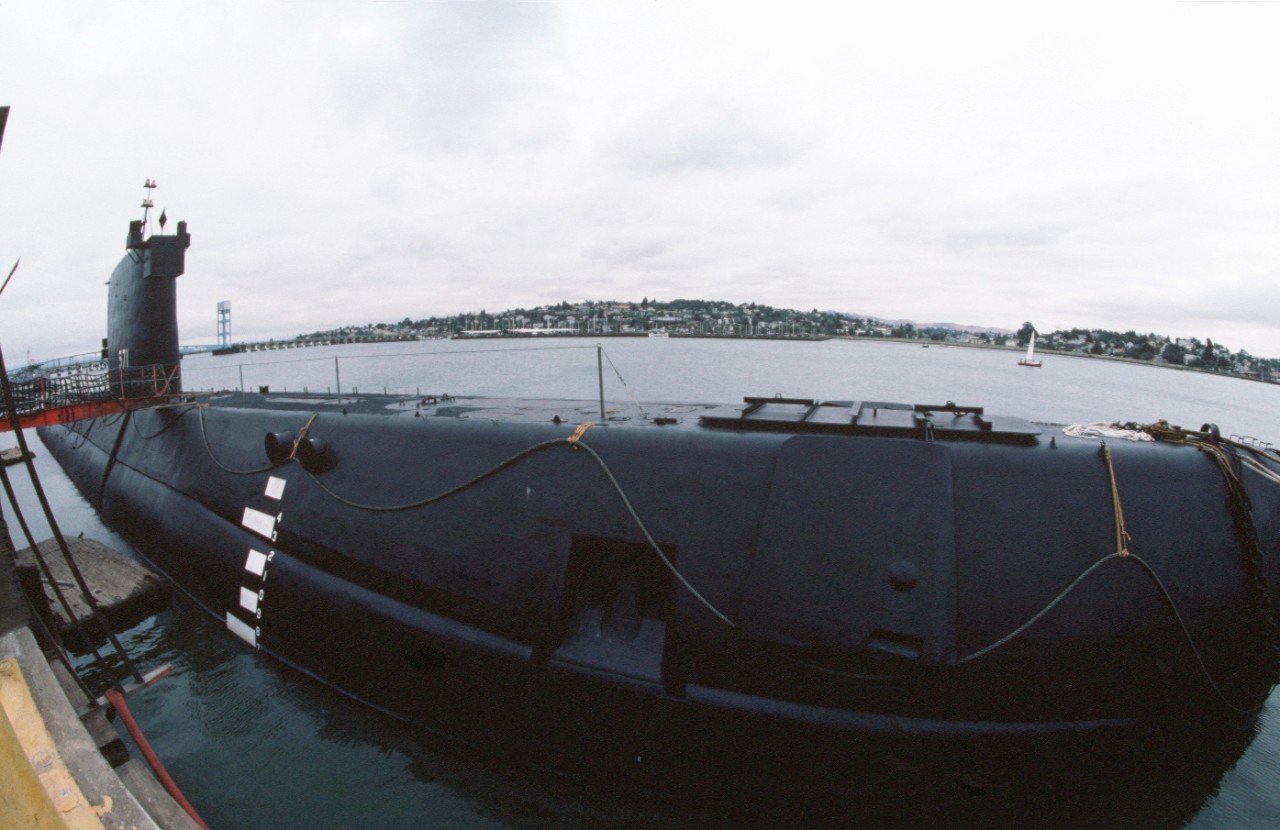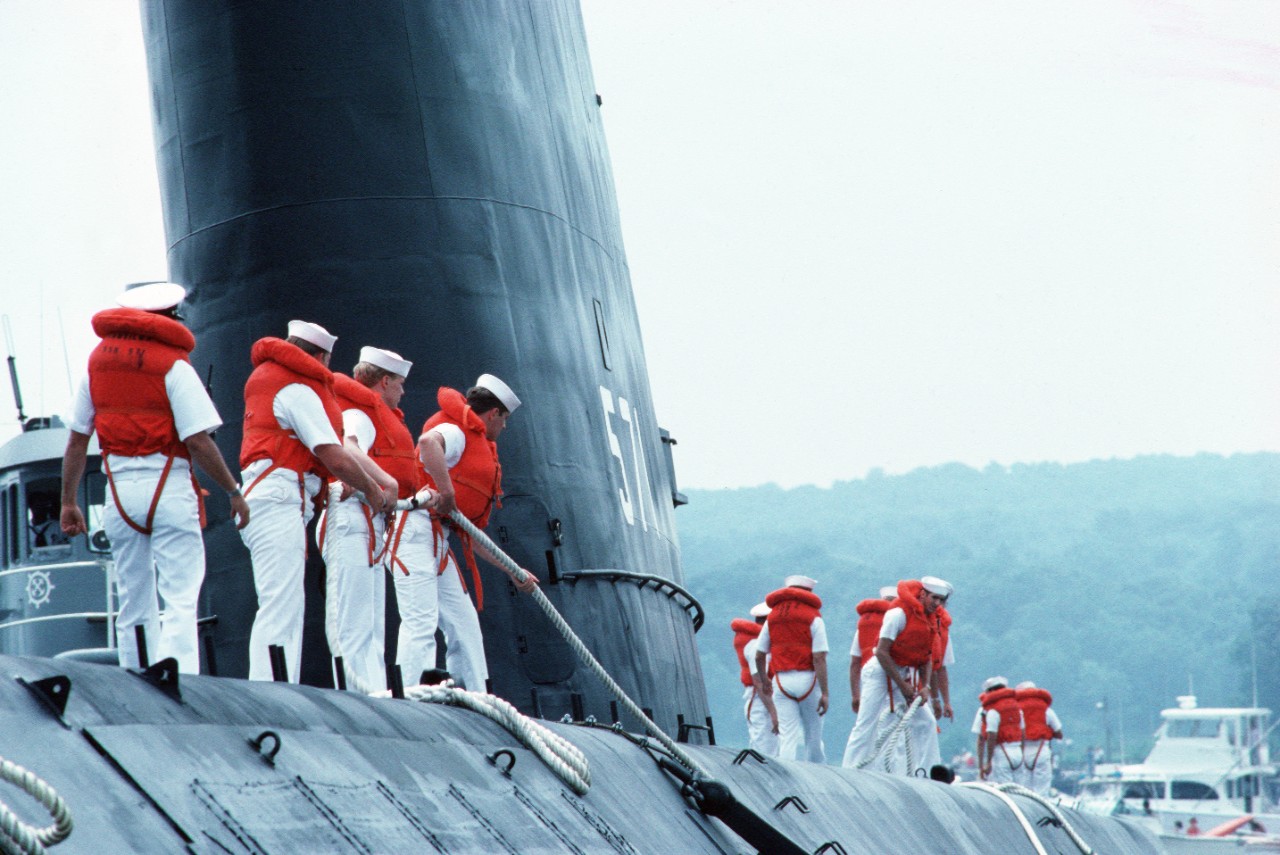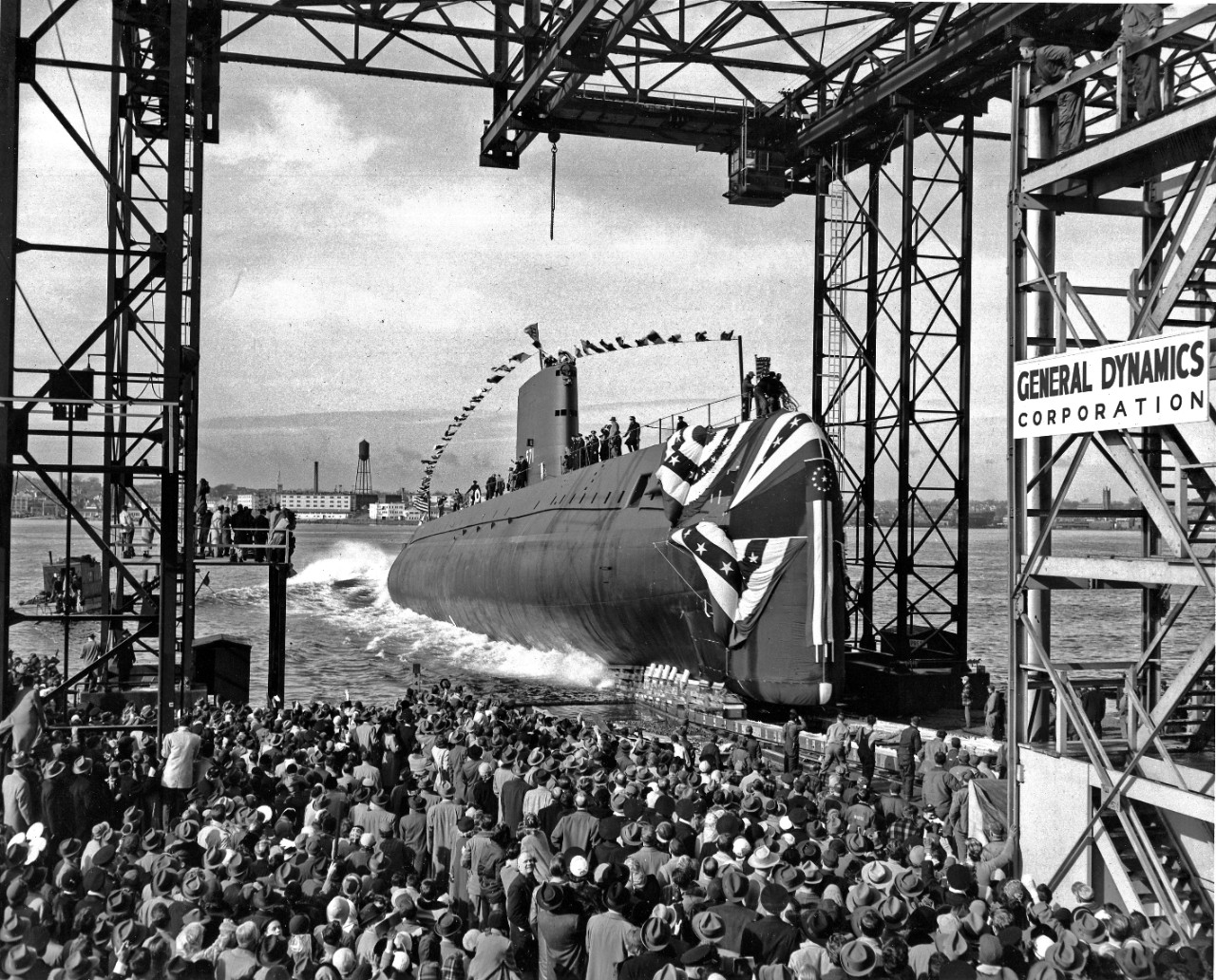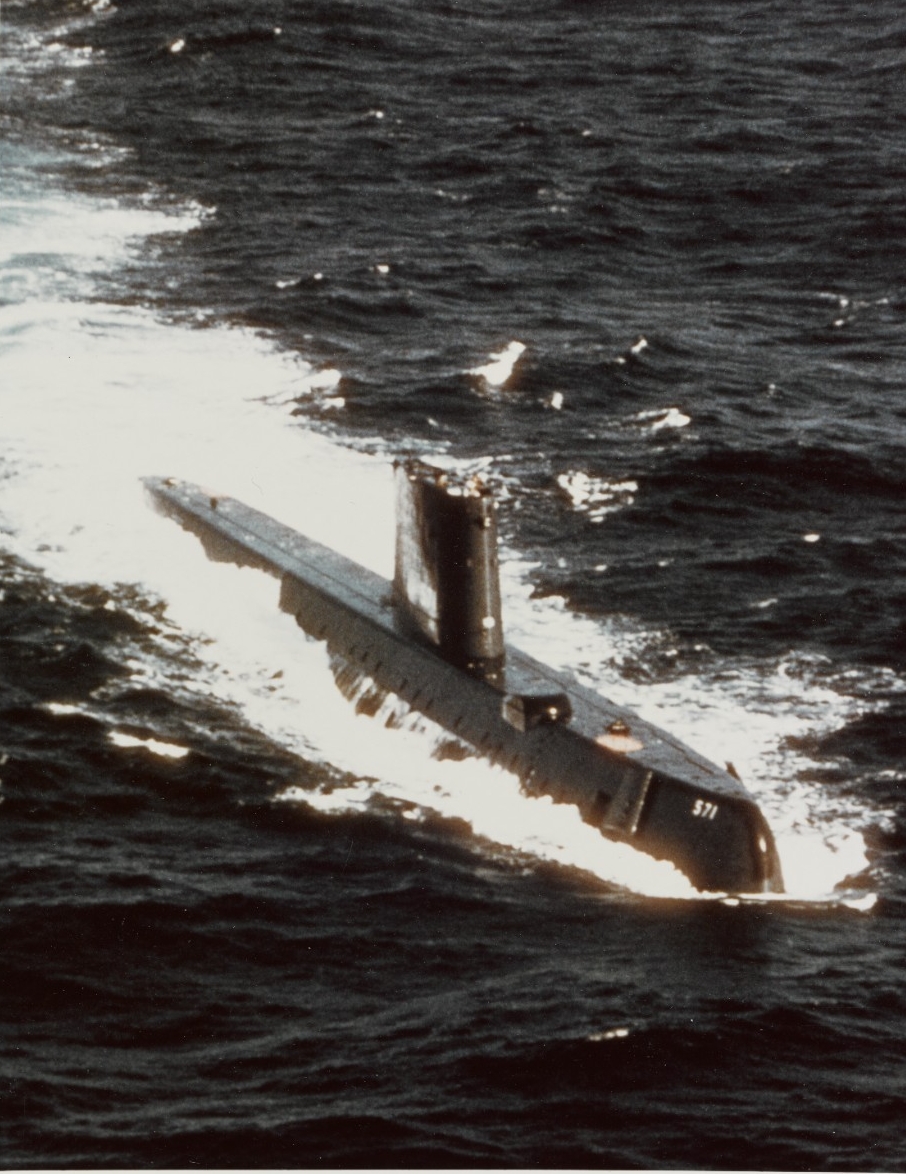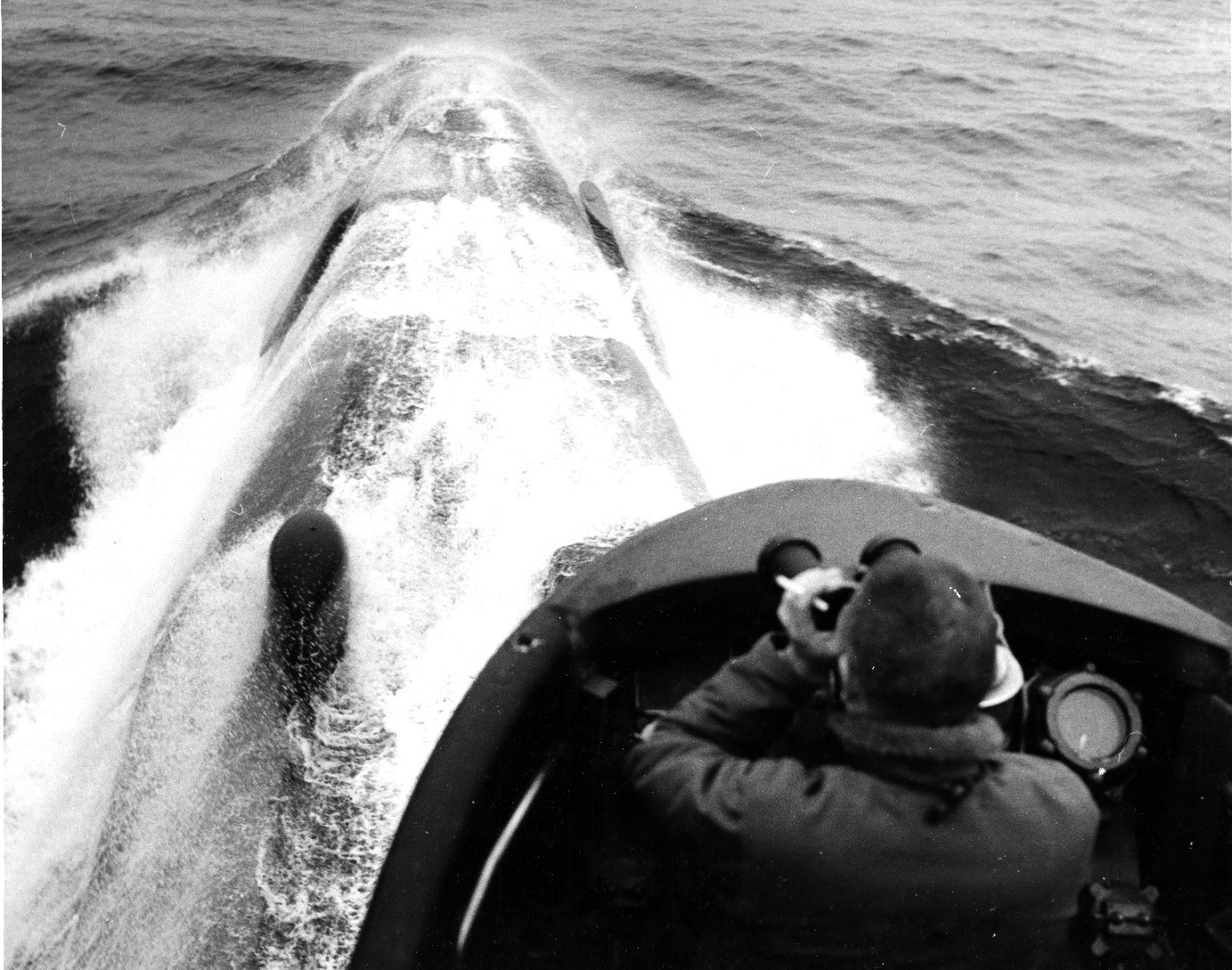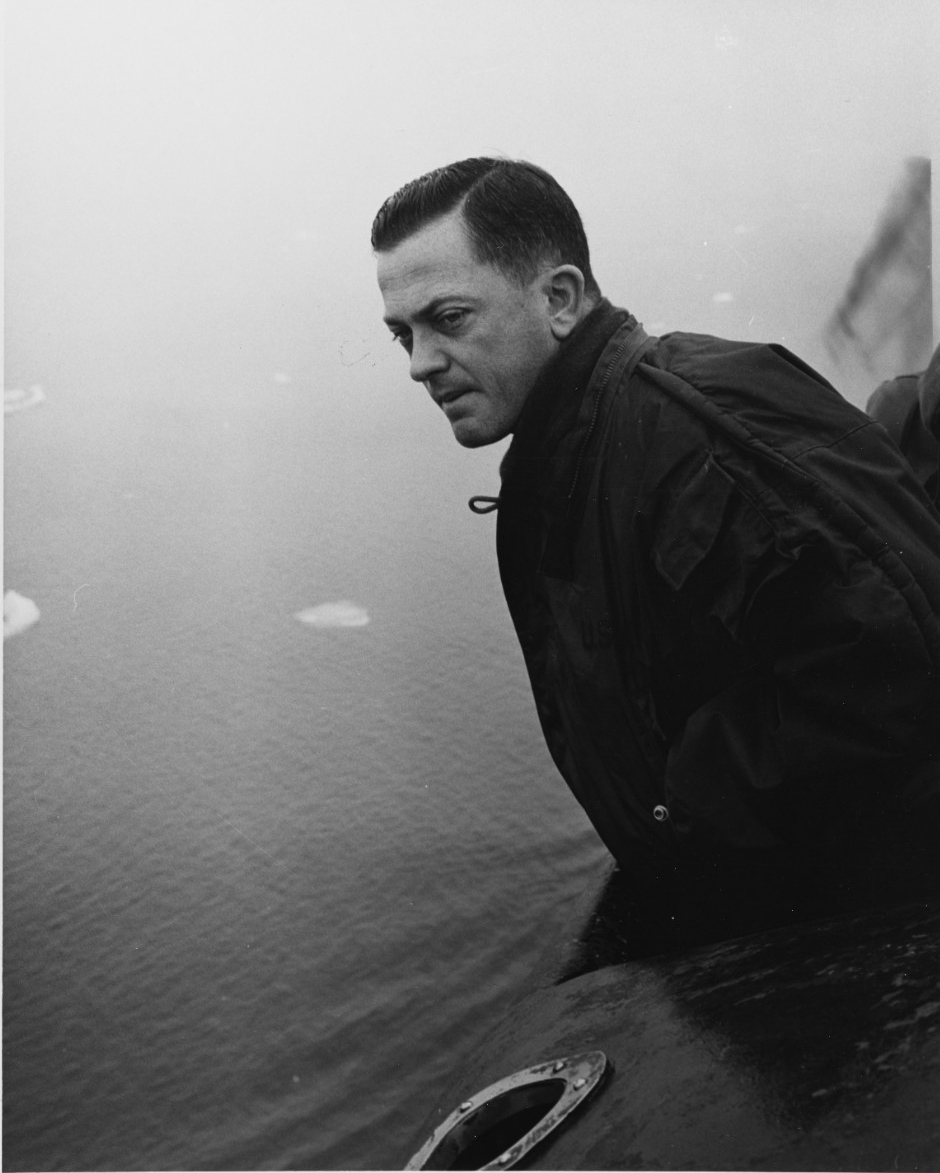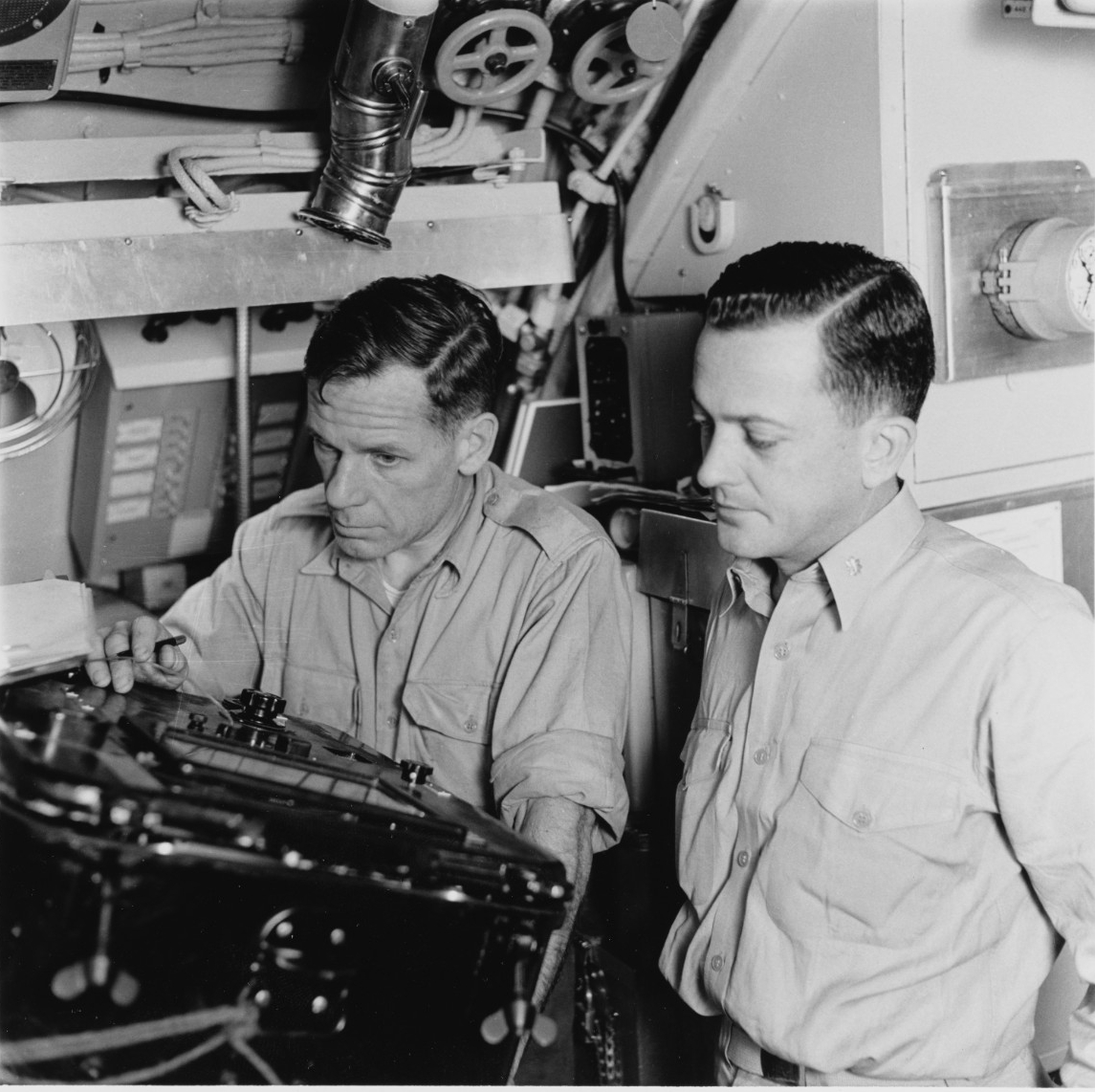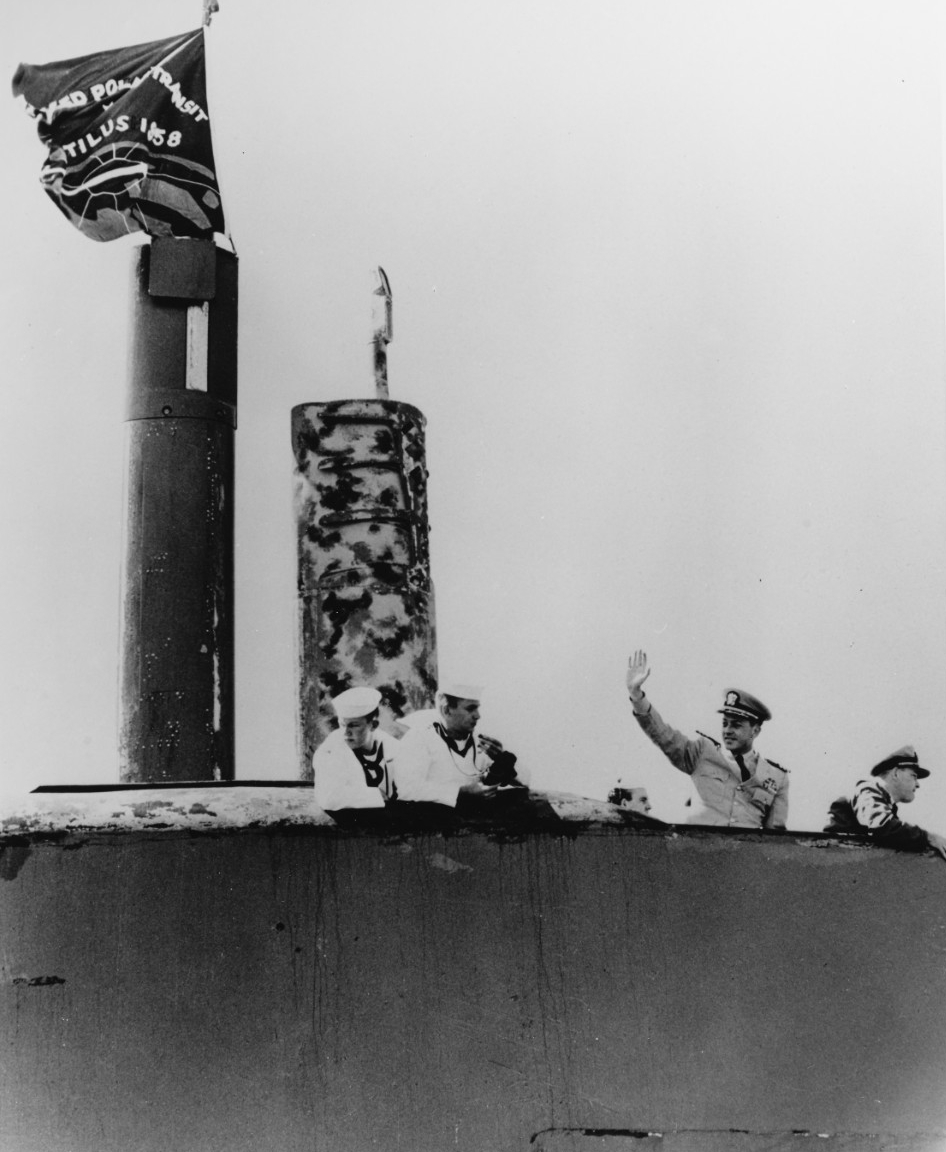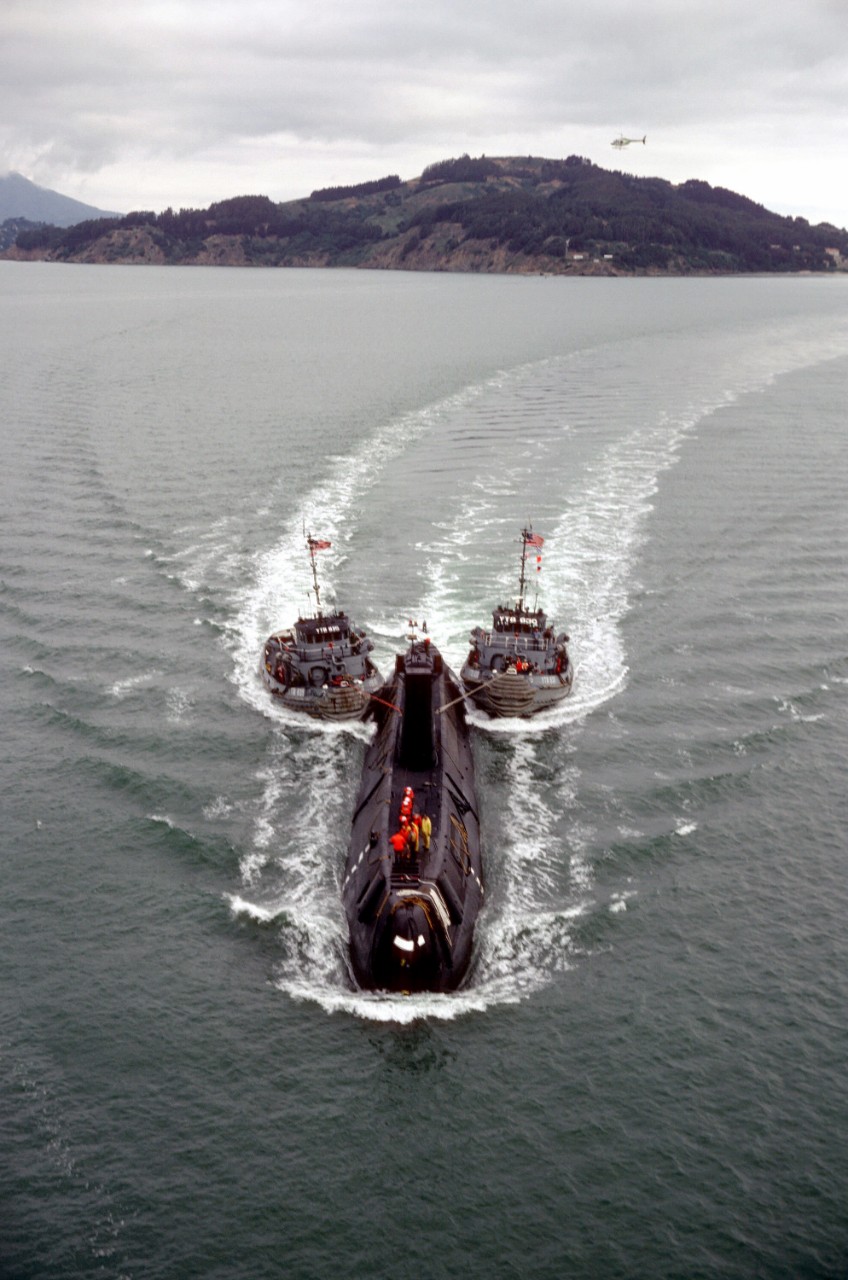USS Nautilus (SSN-571)
USS Nautilus (SSN-571) was commissioned at Groton, Connecticut, on 30 September 1954 with Commander Eugene P. Wilkinson as the boat’s first commander. The construction of Nautilus—the world’s first nuclear powered submarine—was made possible by the successful development of a nuclear propulsion plant by a group of scientists and engineers, under the leadership of Captain Hyman G. Rickover, at the Naval Reactors Branch of the Atomic Energy Commission. Following commissioning, Nautilus remained dockside for further construction and testing for the next several months. On 17 January 1955, she was underway on nuclear power. After sea trials and preliminary acceptance by the Navy, Nautilus headed south for shakedown on 10 May. While enroute to Puerto Rico, she remained submerged traveling 1,381 miles in 89.8 hours, the longest submerged cruise, to that date, by a submarine, and at the highest sustained submerged speed ever recorded for a period of more than one hour’s duration. In July and August, Nautilus conducted rigorous exercises with hunter-killer groups in Narragansett Bay, Rhode Island, and off Bermuda. She rounded out the year visiting several east coast Navy bases, a battery of torpedo firing tests, and standardization trials.
The following year, Nautilus operated out of Naval Submarine Base New London, Connecticut, where the effects of a submarine with increased speed and endurance were tested on contemporary anti-submarine warfare practices. The study found that anti-submarine practices, such as was used during World War II, were ineffective against a submarine which did not need to surface, could dive deeper, and could clear a search area in record time. In between testing, Nautilus conducted press tours and hosted several dignitaries from the Navy and Capitol Hill.
On 4 February 1957, Nautilus logged her 60,000th nautical mile. It also marked another first for the boat, as the submarine was put into the Electric Boat Company Division of General Dynamics Corporation at Groton to replace the nuclear fuel core in her Westinghouse Electric submarine thermal reactor. In early April, Nautilus operated off Bermuda with USS Seawolf (SSN-575)—the second nuclear powered submarine—before departing for the U.S. west coast on 15 May. While there, Nautilus participated in multiple exercises designed to acquaint the units of the Pacific Fleet with the capabilities of nuclear submarines. She returned to New London on 21 July.
On 19 August, Nautilus departed New London for her first voyage under the Arctic polar ice pack. The 1,383 mile journey was significant, because previously U.S. submarines did not travel to the frozen northern oceans due to diesel-electric boats could not travel freely under ice. The opening of the Arctic to Navy submarines allowed access to the previously protected waters of the Soviet Union. From the Arctic, Nautilus set sail for the eastern Atlantic to participate in NATO exercises off Norway and to visit various British and French ports. Nautilus returned to New London on 28 October where she underwent upkeep.
On 25 April 1958, Nautilus was once again headed for the U.S. west coast where she made stops in San Diego, San Francisco, and Seattle. On 9 June, Nautilus departed Seattle to conduct the highly secret “Operation Sunshine,” a fully submerged transit under the North Pole. However, the first attempt was blocked by drift ice in the relatively shallow waters of the Chukchi Sea, and the submarine returned to Pearl Harbor. Her second attempt, begun on 23 July, proved successful. Nautilus submerged in the Barrow Sea on 1 August, transited the geographic North Pole on 3 August, and, after running submerged an additional 96 hours, surfaced off Greenland on 7 August. The commanding officer, Commander William R. Anderson, and the crew were subsequently personally congratulated by President Dwight D. Eisenhower and awarded the Presidential Unit Citation.
Following fleet exercises in early 1959, Nautilus entered Portsmouth Naval Shipyard for her first complete overhaul. Updates included the second replacement of the reactor core, overhaul of almost all machinery, new sensors, and other equipment. On 24 October 1960, Nautilus departed Portsmouth for her first deployment with Sixth Fleet in the Mediterranean. Although the deployment was relatively short, she managed to visit Rota, Spain; Valleta, Malta; and La Spezia, Italy. She returned to her homeport of New London on 16 December.
By 1961, the Navy had about a dozen nuclear powered submarines in service. Nautilus continued to focus on evaluation tests for anti-submarine warfare improvements and various NATO exercises in the Atlantic. The pattern was broken in the fall of 1962, when Nautilus participated in the quarantine of Cuba during the Cuban Missile Crisis. In August 1963, Nautilus headed east again for a two month Mediterranean tour before returning to Portsmouth for an extensive overhaul. The overhaul took 27 months to complete. The submarine returned to homeport on 2 May 1966.
Over the next six years, Nautilus participated in several fleet exercises while steaming more than 200,000 miles. In the spring of 1966, she again entered the record books when she logged her 300,000th mile underway. During the following 12 years, Nautilus was involved in a variety of developmental testing programs while continuing to serve alongside many of the more modern nuclear powered submarines she had preceded.
On 9 April 1979, Nautilus departed Groton, on her final underway, steaming south to the Panama Canal via Guantanamo Bay and Cartagena, Columbia. From there, she cruised north and reached Mare Island Naval Shipyard, Vallejo, California, on 26 May, to begin inactivation procedures. The ground breaking submarine decommissioned on 3 March 1980.
In recognition of her pioneering role in the practical use of nuclear power, Nautilus was designated a National Historic Landmark by the Secretary of the Interior on 20 May 1982. Following an extensive historic ship conversion at Mare Island, the submarine was towed to Groton, arriving on 6 July 1985. There, on 11 April 1986, 86 years to the day after the establishment of the U.S. Submarine Force, historic ship Nautilus and the Submarine Force Museum opened to the public as the first exhibit of its kind in the world. The unique museum ship continues to serve as a dramatic link in both Cold War-era history and the birth of the nuclear age.
In October 2021, Nautilus is scheduled to receive $36 million in upgrades to include: full blast and paint of all exterior; repairs to her superstructure; full topside decking repairs; all internal/external tanks inspected, repaired, and preserved; lighting and electrical distribution upgrades; and enhanced access to certain areas for staff members. The objective of the work is to give Nautilus 30 years of availability to the public to continue to tell her stories of the bold and courageous Sailors of U.S. submarine force. The work is scheduled to be complete in the summer of 2022.
*****
Suggested Reading
- The Nuclear Navy
- Submarine Force
- Polar Exploration
- A Brief History of U.S. Navy Fleet Ballistic Missiles and Submarines
- The U.S. Navy in the Cold War Era, 1945–1991
- Conflict and Cooperation: The U.S. and Soviet Navies in the Cold War
- Nuclear Navy and USS Nautilus Celebrate 60th Anniversary
- USS Nautilus (SSN-571) Deck Log Book—July 1958
- USS Nautilus (SSN-571) Deck Log Book—August 1958
Art Exhibit
Interviews with USS Nautilus (SSN-571) crewmembers
Infographic
Selected Imagery

